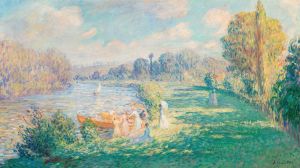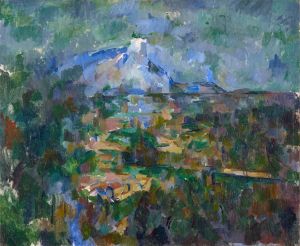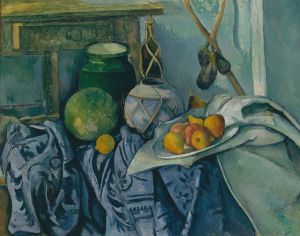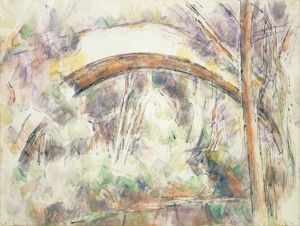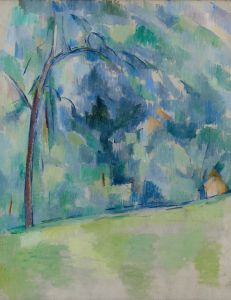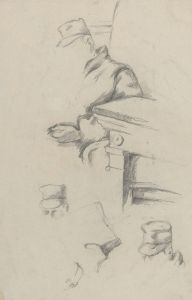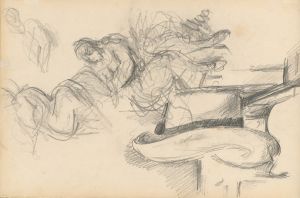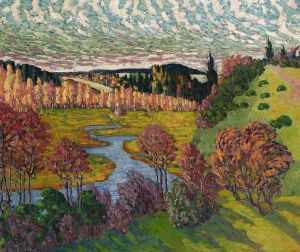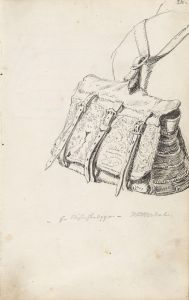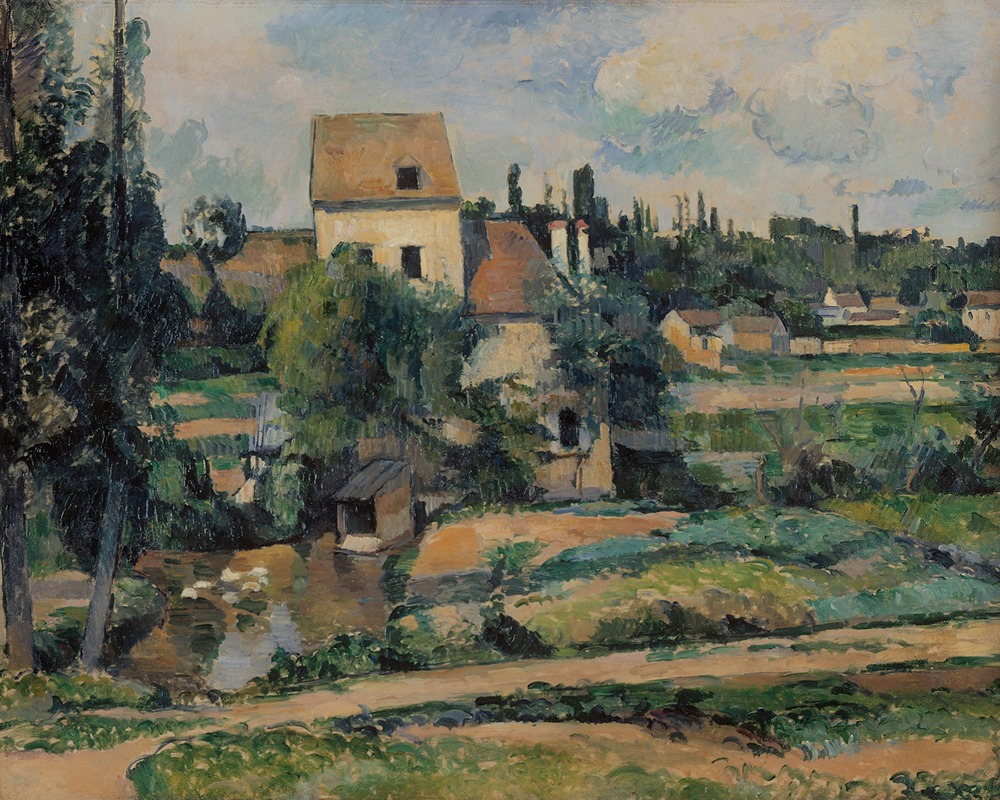
Mill on the Couleuvre at Pontoise
A hand-painted replica of Paul Cézanne’s masterpiece Mill on the Couleuvre at Pontoise, meticulously crafted by professional artists to capture the true essence of the original. Each piece is created with museum-quality canvas and rare mineral pigments, carefully painted by experienced artists with delicate brushstrokes and rich, layered colors to perfectly recreate the texture of the original artwork. Unlike machine-printed reproductions, this hand-painted version brings the painting to life, infused with the artist’s emotions and skill in every stroke. Whether for personal collection or home decoration, it instantly elevates the artistic atmosphere of any space.
Paul Cézanne's "Mill on the Couleuvre at Pontoise" is an exemplary piece of the artist's work during his time in Pontoise, a period that was crucial in his development as a painter. Created in 1881, this painting reflects Cézanne's evolving style and his exploration of form and color, which would later influence the transition from 19th-century Impressionism to 20th-century Cubism.
Cézanne spent several years in Pontoise, a commune in the northwestern suburbs of Paris, where he worked closely with Camille Pissarro, a leading figure in the Impressionist movement. This collaboration was significant for Cézanne, as Pissarro's influence helped him refine his technique and embrace the plein air painting style, which involved painting outdoors to capture natural light and atmosphere. During this period, Cézanne produced numerous landscapes that depicted the rural scenery of Pontoise and its surroundings.
"Mill on the Couleuvre at Pontoise" showcases Cézanne's interest in capturing the essence of the landscape through structured brushstrokes and a carefully considered composition. The painting depicts a mill situated along the Couleuvre River, surrounded by lush greenery and a serene environment. Cézanne's use of color is particularly noteworthy; he employs a palette of greens, blues, and earth tones to convey the natural beauty of the scene. His brushwork is deliberate and methodical, creating a sense of solidity and permanence in the landscape.
One of the defining characteristics of Cézanne's work during this period is his approach to form and perspective. Unlike the Impressionists, who often focused on capturing fleeting moments and the effects of light, Cézanne was more concerned with the underlying structure of the objects he painted. In "Mill on the Couleuvre at Pontoise," this is evident in the way he constructs the buildings and trees, using geometric shapes and a subtle modulation of color to suggest depth and volume.
Cézanne's time in Pontoise was a period of experimentation and growth, and "Mill on the Couleuvre at Pontoise" is a testament to his developing style. The painting reflects his departure from the more spontaneous techniques of Impressionism and his move towards a more analytical approach to painting. This shift would eventually lead to his role as a precursor to Cubism, influencing artists such as Pablo Picasso and Georges Braque.
Today, "Mill on the Couleuvre at Pontoise" is recognized as an important work in Cézanne's oeuvre, illustrating his transition from Impressionism to a more structured and innovative style. The painting is held in high regard for its contribution to the evolution of modern art, showcasing Cézanne's unique vision and his ability to capture the timeless beauty of the natural world.
Cézanne's legacy is profound, and "Mill on the Couleuvre at Pontoise" remains a significant piece for both art historians and enthusiasts. It exemplifies the artist's dedication to exploring new techniques and his influence on future generations of artists. Through his work, Cézanne paved the way for new artistic movements and left an indelible mark on the history of art.





